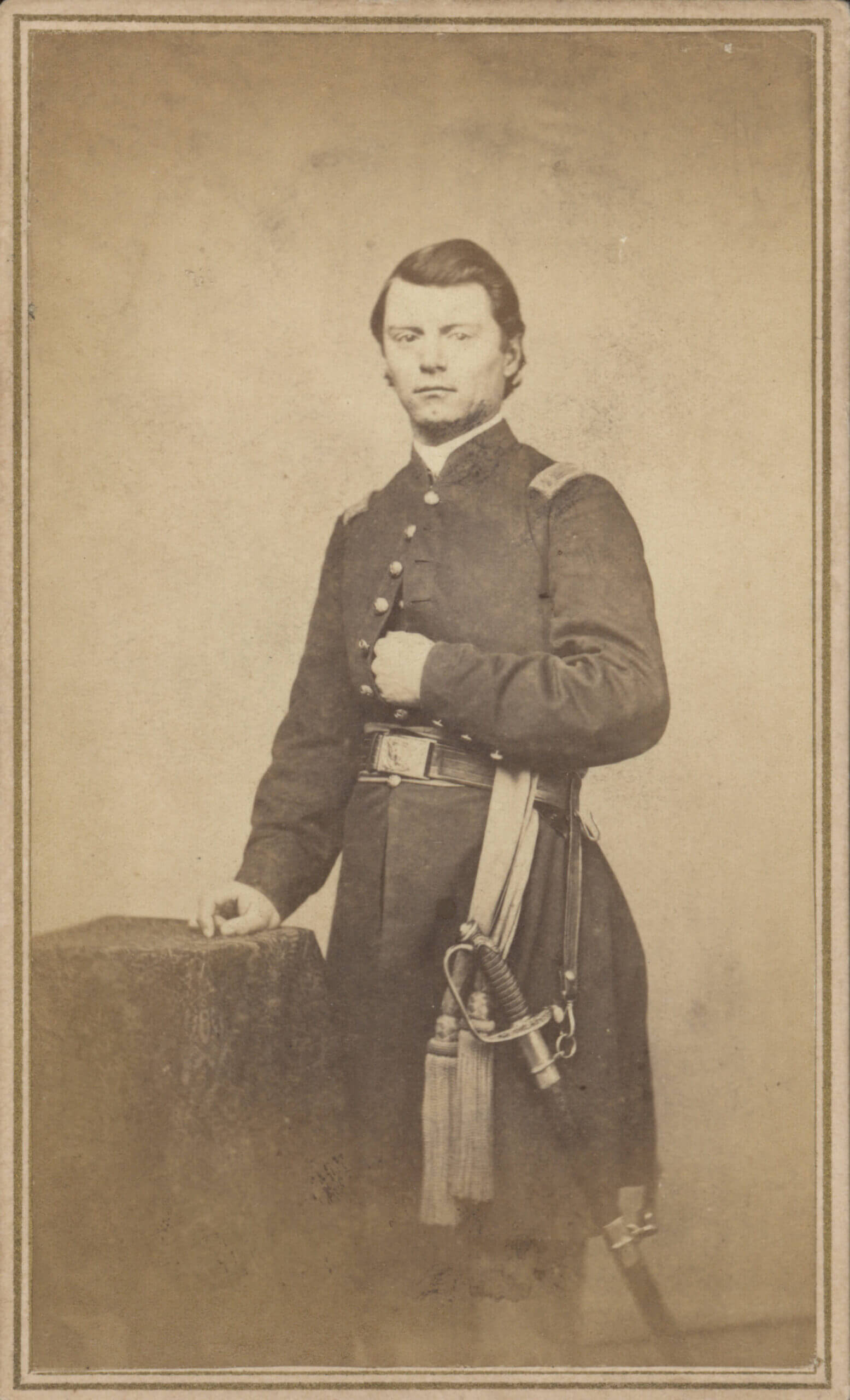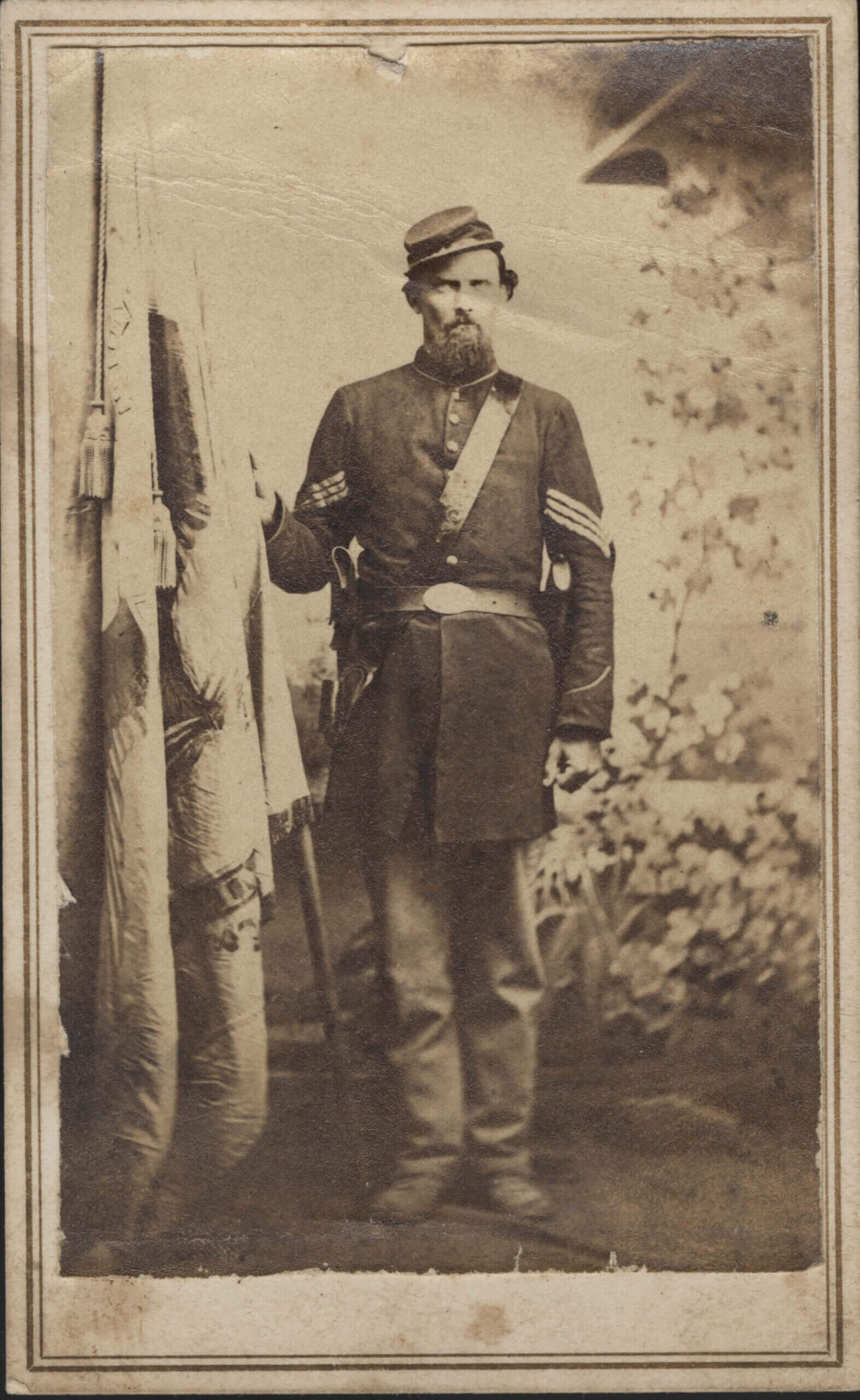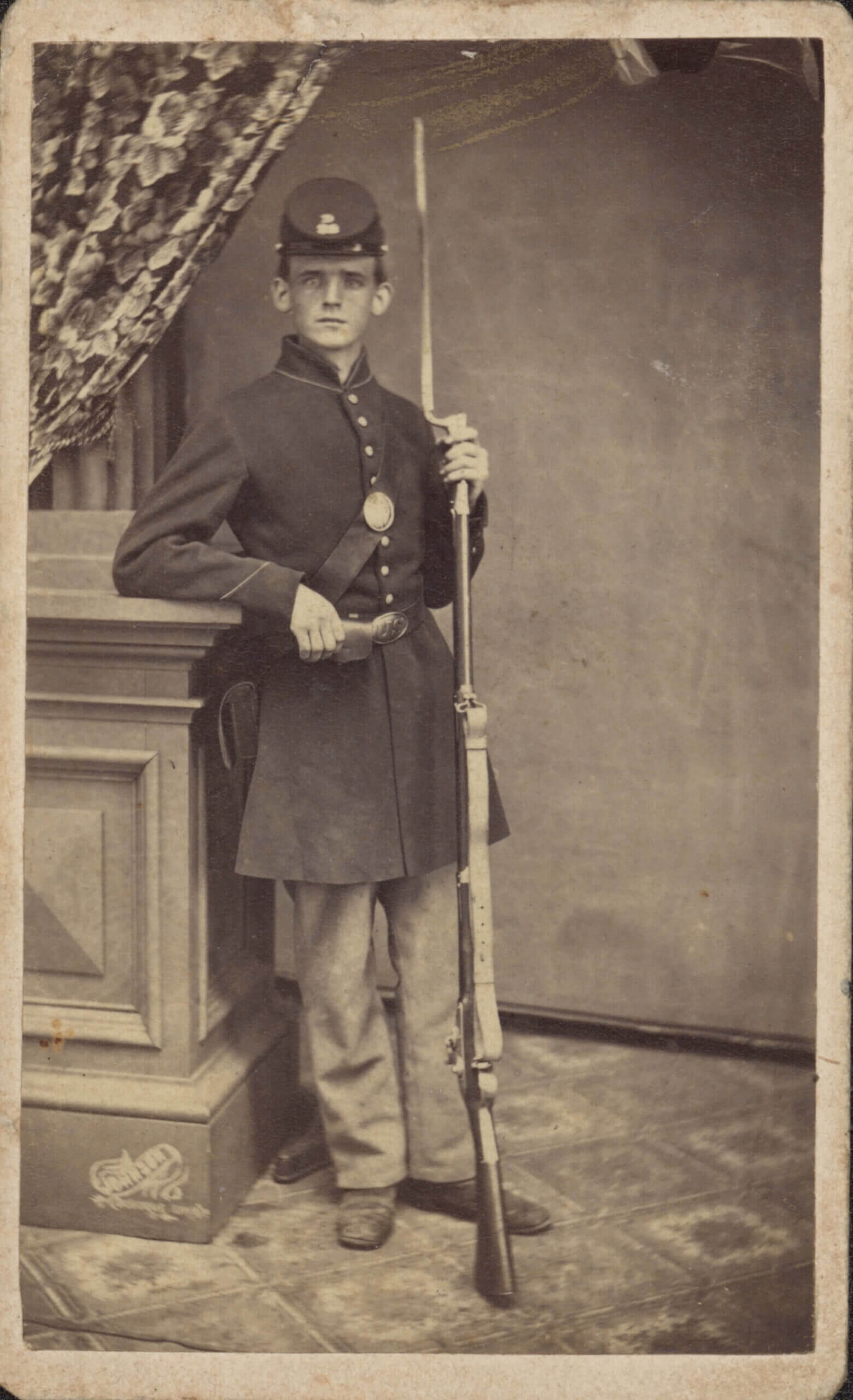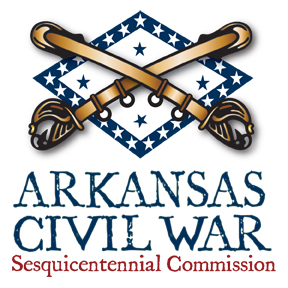The Battle of Arkansas Post, also known as the Battle of Fort Hindman, was fought January 9-11, 1863. Union forces under the command of Major General John A. McClernand attacked the Confederate fort under the command of Brigadier General Thomas J. Churchill in an effort to stop the harassment of Union shipping on the Arkansas River.
USS Tyler was a 575-ton "timberclad" gunboat that was converted from a commercial side-wheel steamship. During the Battle of Helena, Tyler helped defend the Union post from a Confederate land attack. Tyler spent most of the remainder of the war in Arkansas, principally on the White River.
DeValls Bluff, situated on the White River, was an important logistical site for the Union army. Because of the uncertainty of river conditions on the Arkansas River, supplies and men where often unloaded there and transferred over to the Little Rock and Memphis Railroad for movement to Little Rock and points beyond.

William O. Kretsinger enlisted in the 10th Kansas Infantry Regiment at Fort Leavenworth in 1861. He rose to the rank of sergeant before being discharged in 1863. Following his discharge, Kretsinger was commissioned as an officer in the 56th United States Colored Infantry Regiment, formerly the 3rd Arkansas Infantry (African Descent). He was cited for gallantry at Big Creek, Arkansas, on July 26, 1864.

Brigadier General Thomas P. Dockery started off the war in command of the 5th Infantry Regiment, Arkansas State Troops, which he led at Wilson's Creek. He was later put in command of the 19th Arkansas Infantry Regiment. Following his capture at Vicksburg and later parole, Dockery was promoted to brigadier general. He returned to Arkansas and assumed command of a brigade, which he led during the Camden Expedition.

Robert L. Baugh, a resident of Hot Spring County, Arkansas, enlisted in King's 22nd Arkansas Infantry Regiment on March 1, 1862, at Little Rock. The regiment was sent east of the Mississippi River shortly after it was organized, and its designation was changed to the 20th Arkansas Infantry Regiment. Baugh died near Ripley, Mississippi, on June 26, 1862.

In 1861, John F. Hill, a resident of Clarksville, Arkansas, organized a company of men for service in the 16th Arkansas Infantry Regiment. Hill was elected colonel of the regiment in December 1861. He resigned his commission in May 1862 and returned to Arkansas. Hill later commanded the 7th Arkansas Cavalry Regiment, which participated in the Camden Expedition as well as Price's Missouri Raid.

Sergeant James M. Arnold served as the color bearer of the 12th Kansas Infantry Regiment. The unit, organized in Paola, Kansas, in September 1862, served in detachments along the Kansas and Missouri border until late 1863. By early 1864, the regiment was stationed at Fort Smith. It participated in Frederick Steele's Camden Expedition, in which it suffered considerably on the march, and later returned to Fort Smith. Near the end of the war, the regiment moved to Little Rock and mustered out in June 1865.

George H. Fox enlisted in the 32nd Iowa Infantry Regiment on September 20, 1862. In August 1863, he was part of a gunboat fleet sent up the White River in search of Confederate transports. The expedition soon moved up the Little Red River after learning that the Confederate vessels were located there. After capturing two transports, the Union flotilla started on its return trip. Fox, on board one of the captured vessels, was killed when Confederate forces fired on the ship from the shoreline.

On May 16-18, 1911, Little Rock hosted the twenty-first annual United Confederate Veterans Reunion. Over 140,000 people, including 12,000 veterans, attended the reunion. The high point of the event was the parade that travelled through downtown Little Rock on May 18. It reportedly took over two hours for the parade to pass any one point. The reunion was the largest event in the city's history until the election of Bill Clinton in 1992.



